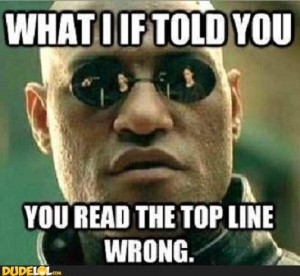Entries Tagged 'copywriting tips' ↓
July 9th, 2012 — copywriting tips, EU Cookie Directive Compliance
You’re most probably aware of the recent EU Privacy and Communications Directive that came into force at the end of May that affects all UK websites.
Basically, it states that website owners must get their users’ consent (via an opt-in basis) to be able to use non-essential cookies to track their data.
If you’re unsure what a cookie is, it’s a small text file that stores data about website users. An example would be Google Analytics, which provides anonymous tracking data about users.
(In case you were wondering, essential cookies are those used to remember the goods you’re buying when you reach checkout, those used in internet banking and those that help pages load quickly.)
90% of UK website owners are ignoring the new legislation
That’s right, according to a recent article in Business Matters, as many as 90% of UK website owners are currently ignoring the new legislation.
The actual ruling came into force in May 2011, but British website owners were given 12 months in which to comply with the legislation.
The most common of the non-essential cookies used by UK businesses is Google Analytics. Although the legislation does allow for those websites that work on ‘implied consent’ where users have been made aware of revised privacy policies, this is still a bit of a grey area, so it is best to use a pop up to explicitly gain the users consent.
The cost of non-compliance
The ICO (Information Commissioner’s Office) has the power to fine website owners £500,000 if they don’t comply – that’s going to make a huge dent in anyone’s wallet.
But, they don’t have a stealth team out and about tracking down miscreants.
In fact, the ICO have confirmed that even though they are currently receiving complaints from users of UK websites that aren’t complying, in the first instance they will work with the site owners to improve their cookie policies rather than enforcing the rather hefty fine.
What you should be doing now
If you are a UK website owner and you haven’t put any compliance measures in place yet, we suggest that you at least show you are moving towards compliance, just in case the ICO come knocking.
Alternatively, get a notice and opt-in box on your home page that tells users that you use cookies and ask for their consent to use them, along with a link to further information.
Over to you
What are your thoughts about the cookie directive?
What actions have you taken to make sure your website complies?
Leave a comment below, we’d love to hear from you.
Sally Ormond – Copywriter & Managing Director of Briar Copywriting Ltd
July 6th, 2012 — copywriter, copywriting, copywriting tips
As a copywriter I know the power of ‘you’.
It’s a small word, but one that creates an instant connection between you and your customers. It shows you are thinking about them and how you can help make their life easier.
Back in 2010 I wrote a post about this very subject. It’s such an important part of copywriting I think it deserves a second airing – enjoy:
Thos e immortal words were famously uttered by Travis Bickle (Robert De Niro) in the 1976 classic, “Taxi Driver”.
e immortal words were famously uttered by Travis Bickle (Robert De Niro) in the 1976 classic, “Taxi Driver”.
This post isn’t about that particular iconic film though. Rather, I want to talk about your website copywriting and how it should be written to gain the greatest effect.
Who do you want to read your website?
This is a topic that I have touched on in the past but it is so important, I’m going to talk about it again.
You might think it an odd question – “who do you want to read your website?” – but it isn’t really.
Look at it another way – what do you want your website to do?
Hopefully you answered “sell” or perhaps “generate enquiries”. But you will only do that if your website copy talks to your reader. Think back to the last networking event you went to. No doubt someone came up and introduced themselves to you and launched into their elevator pitch. What would you find most interesting? Someone who says:
“I’m John, I sell websites. My websites have state of the art features and they look great. They are really eye catching and I work with clients all over the country. I can create ecommerce sites, flash sites and just about anything else you can think of. My company is called Websitearama, this is my card, look me up.”
Lost the will to live yet? I’m guessing that you have now made your excuses and left John to find another victim to bore.
But what if John had said this?
“Hi, I’m John and I can help your website attract targeted traffic that will generate a constant stream of sales. With our software you’ll never lose a sale because it will automatically follow up every lead. You will no longer be walking away from business because you don’t have time to keep in touch with all your prospects – your website software will do it for you.”
In the first scenario John bangs on about his company. At no point does he even attempt to say how he can help his clients. His websites have state of the art features – so what? The are really eye-catching – so what?
But the second attempt starts to address his audience. His website attracts targeted traffic – so what? – so it generates a constant stream of leads. It follows up every lead automatically – so what? – so you’ll never lose another sale.
This time John has qualified the benefits of his product by illustrating what that will mean to his clients.
So what’s all that got to do with websites?
When someone lands on your website they are there for a reason – they want to buy what you are selling.
To make yourself stand out from all the other websites, you have to make sure you give them what they want. If they land on your site only to read all about your company (an Ego website) they’ll get bored and move on.
But if your website copy addresses them directly and tells them what you will do for them, you’ll get their attention.
You
That is a word that should be littered throughout your web copy. By using “you” and “your” you are directly addressing your reader. You are involving them in your website and showing them precisely why they’ll benefit from your product/service.
Stating what your benefits are and what they’ll do for your reader will prevent them from saying those dreaded words:
“What’s in it for me?”
If they have to say that you’ve failed to get your message across clearly.
So next time you are writing your web copy make sure you banish “we” and replace it with “you”. By writing directly to your reader you’ll begin to write benefits driven copy that will sell. It may take a bit of practice but stick with it as it will pay off.
By the way, this is also true for your other sales materials.
Sally Ormond – freelance copywriter
June 29th, 2012 — copywriting tips, social media, social media training, twitter
One of the main reasons businesses don’t use Twitter is that they don’t know what to tweet.
There appears to be a common misconception that tweets generally comprise of ‘I’ve just had a cheese sandwich’ or ‘time for a coffee’ or other such mundane updates.
There is a lot more to Twitter than that and no, by being part of it you’re not going to be subjected to an onslaught of dietary updates from all your followers.
The whole point of Twitter is to engage with others, to chat with them, share great information and offer help and advice wherever possible.
But if you’re still sat there, fingers poised over keyword, without a clue what to tweet, take a look at the list below.
Things you should be tweeting about
1. Share links
If you blog, every time a new post is published, tweet the link. Tell everyone you have a new blog post out, give its title and then insert the link. You will be offering them great information and promoting your blog at the same time.
Also, if in your daily reading you spot and article or blog you found interesting, share the link with your followers, you never know, they might find it interesting too.
2. Ask
Rather than just pushing your opinions on people, ask what they think about current issues, or things happening within your industry. This is a great way to get conversations started and draw new followers to you.
3. Respond
Twitter isn’t just about you pushing your stuff out there. You also need to listen to your followers and respond to their questions too. If they have a problem that you can help them with, tweet back to them and lend a hand.
4. Business updates
Let your followers know what’s going on in your business. If you’re involved with local charities, tell them. If a member of your team has a story to tell, let them. This is a great way to show the human side of your business. If you have photos of events etc., share those too.
5. Tips
People love to get helpful tips. So if you tweet something that’s going to add value to your followers, they’re more likely to start engaging with you.
6. Retweets
If someone you follow tweets something interesting, retweet it so other people that follow you can also see it.
7. Shout out about others
If you deal with a company that offers great customer service, or helped you out when you needed it, tweet about them. You will come across as the caring, sharing type and they’ll benefit from greater exposure.
8. Talk about events
Even if it’s a local networking event, tell people about it. You never know how many other tweeters are there. Also, it’s a good idea to tweet about it before the event so fellow tweeters can let you know that they’ll be there too so you can have your very own mini tweetup.
9. Comment on news
If there’s something new happening in your industry tell people about it and stimulate discussions.
10. Have fun
Twitter is supposed to be fun. It’s a great way to engage with people, so be human and share videos and photos that made you smile.
So there you have it, 10 things to tweet about. But remember, much like texting and email, intonation and sarcasm don’t translate well in tweets, so:
- Don’t get dragged into arguments, you’ll always end up looking bad
- Make it clear when you’re being flippant
- Don’t tweet something that’s going to cause offence
In other words, think before you tweet.
Over to you
How are you using twitter? What successes have you had?
Leave a comment below.
Sally Ormond (@sallyormond) – copywriter
June 25th, 2012 — copywriter, copywriting tips, proofreading
Yes, I know, us copywriters are always banging on about the important of proofreading.
And no, I’m not going to claim to be whiter than white in that area. I am human, I make mistakes, but I do my utmost to stop any typos slipping through.
You may have seen this on Facebook recently (it’s appeared in my timeline several times):

Go on, admit it. You had to read it twice, didn’t you?
See how easy it is to let a mistake slip through?
So how can you make sure your typos are spotted before it’s too late?
Two pairs of eyes are better than one
One of the best ways of proofing your work is to get a trusted colleague to read it through for you.
By trusted I mean someone you know who will actually read every word rather than skimming it.
Because they haven’t written it, they are more likely to spot any errors you’ve made.
That’s great if you work with other people, but what happens if you’re a freelancer working on your own?
Going solo
Proofing your own work is tricky.
You wrote it, you know what you wanted to say, so your brain has the tendency to trick you into thinking what you thought you wrote is actually what is on the page.
Of course, you could hire in a proofreader to check your work for you. But that adds an additional cost to your work that you’ll either have to absorb or pass on to your clients.
The other option is the one I use. Yes, it’s time consuming, but it does pick up your errors.
First, once you’ve written your copy put it to one side – preferably for at least 24 hours – and go and do something else.
Then, print it out.
OK, I know, that’s not very environmentally friendly, but reading off a screen is horrible and you can’t easily mark-up errors when you find them.
Next, start from the last word on the last page and read it backwards, right to left.
Why?
For starters it won’t make sense so you’ll concentrate on each word, meaning you’re more likely to spot any typos.
Once you’ve read through the whole document like that, start from the beginning and read it out loud. This will not only highlight any grammatical errors and incorrect word usage, it will also draw your attention to any repetitions and the rhythm of your writing.
Then, go back through and make the changes you marked-up and go through the whole process again.
It might sound long winded, but it will save a lot of embarrassment in the long run.
Over to you
Do you have a different technique for proofing your work? If so leave a comment below and tell us about it.
June 18th, 2012 — copywriting tips, facebook, social media, social media marketing
Thankfully, no two businesses are the same. Could you imagine how boring that would be?
But because every business is different, their marketing strategies will also be different.
Take Facebook for example, just because you find it helps your business doesn’t mean it will help the guy next door. That’s why it’s imperative you take a good look at your business before diving into marketing. You must think about how Facebook would be best used in order for you to get the most out of it.
Before you hang your head in despair, take a few minutes to read through this very useful post I found on SocialMediaExaminer.com that takes a look at 4 different ways you can use Facebook for your business.
So, grab a coffee while you read 4 Unique Ways to Use Facebook for Your Business and kick start your social media marketing the right way.
Sally Ormond – Copywriter

 e immortal words were famously uttered by Travis Bickle (Robert De Niro) in the 1976 classic, “Taxi Driver”.
e immortal words were famously uttered by Travis Bickle (Robert De Niro) in the 1976 classic, “Taxi Driver”.






